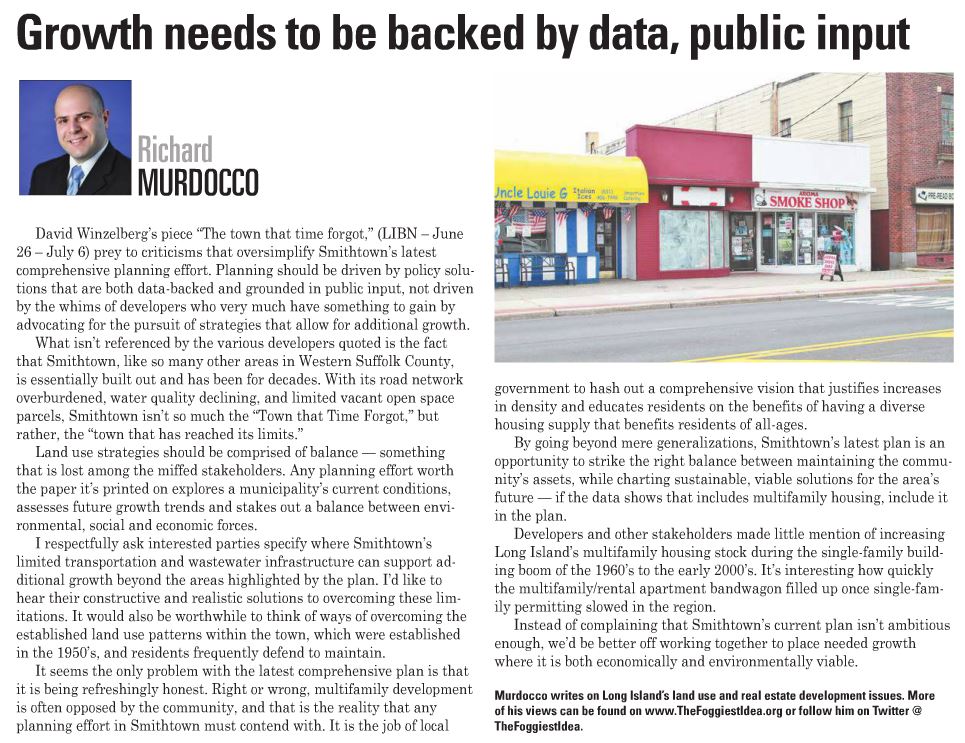The following was written for the July 3rd edition of Long Island Business News. The original can be read here.
David Winzelberg’s piece “The Town that Time Forgot” (LIBN June 26) falls prey to criticisms that oversimplify Smithtown’s latest comprehensive planning effort. Planning should be driven by policy solutions that are both data-backed and grounded in public input, not driven by the whims of developers who very much have something to gain by advocating for the pursuit of strategies that allow for additional growth.
What isn’t referenced by the various developers quoted is the fact that Smithtown, like so many other areas in Western Suffolk County, is essentially built out, and has been for decades. With it’s road network overburdened, water quality declining, and limited vacant open space parcels that would allow for transformative development, Smithtown isn’t so much the “Town that Time Forgot”, but rather, the “town that has reached it’s limits.”
Land use strategies should be comprised of balance – something that is lost among the miffed stakeholders. Any planning effort worth the paper it’s printed on explores a municipality’s current conditions, assesses future growth trends and stakes out a balance between environmental, social and economic forces.
I respectfully ask interested parties to highlight where Smithtown’s limited transportation and wastewater infrastructure can support additional growth beyond the areas highlighted by the plan, as well as offer constructive and realistic solutions to overcoming these said limitations. It would also be worthwhile to think of ways of overcoming the established land use patterns within the town, which have been set in place since the 1950’s, and residents frequently defend to maintain.
It seems the only problem with the latest comprehensive plan is that it is being refreshingly honest – Right or wrong, multifamily development is often opposed by the community, and that is the on-the-ground reality that any planning effort in Smithtown must contend with. It is the job of local government to hash out a comprehensive vision that justifies increases in density, and educates residents on the benefits of having a diverse housing supply that benefits residents of all-ages. By going beyond mere generalizations, Smithtown’s latest plan is an opportunity to strike the right balance between maintaining the community’s assets, while charting sustainable, viable solutions for the area’s future – if the data shows that includes multifamily housing, include it in the plan.
Developers and other stakeholders made little mention of increasing Long Island’s multifamily housing stock during the single-family building boom of the 1960’s to the early 2000’s. It’s interesting how quickly the multifamily/rental apartment bandwagon filled up once single-family permitting slowed in the region.
Instead of complaining that Smithtown’s current plan isn’t ambitious enough, we’d be better off working together to place needed growth where it is both economically and environmentally viable.












